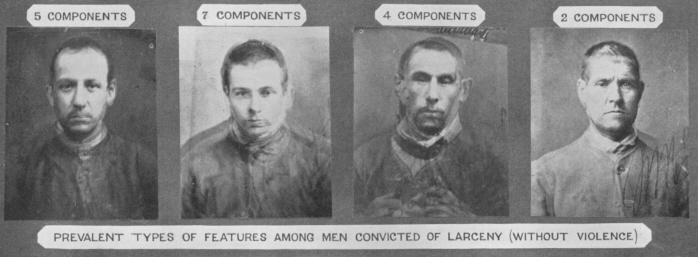
As I hunt for new startups which might transform the world I like to go into the past to find the path to the future. The universe — or the simulation or God (my view) — leaves these secrets for us to uncover.
What is Big Data but a continuation of the collection of the early Victorian naturalists? What is artificial intelligence but the application of machinery to insights that hitherto were bandied about at the Royal Society of London for Improving Natural Knowledge before making their way into the writings of Alfred Wallace and Charles Darwin?
This is the essential to the Clearview legal challenges. Indeed facial recognition is a form of a speech. It’s a form of noticing, of thinking, of drawing inferences from the natural world which might be weaponized in every day life.
One of the topics I like to explore is how various ideas that were leading science once upon a time have since fallen into disfavor. Were all those eminent men of the past really all terrible racist racists? Or were they, like us, pattern seeking primates working on building models and machines to make life more bearable?
I’ve come to the view that a lot of the taboo surrounding various technical questions is due to the following:
deliberate rent seeking behavior by academics and lawyers who want to extort tech companies.
cynical attempts by foreign malefactors to retard American investment in critical next generation technologies.
stupidity or ignorance on the part of a low effort, low IQ press. (This is why it’s such a joy, however rare, to communicate with journalists who are interested in telling stories.)
Of course sometimes disfavor comes simply from the lack of modern tools capable of probing these questions definitively. It’s easier to condemn than it is to explore, n’est ce pas?
These subjects remain the subject of folklore or old wives’ tales into such a point as someone can empirical test them.
Which brings me to Clearview.
The New York Times’s Kashmir Hill describes Hoan and my trip to Cleveland in 2016.
While Johnson and Ton-That hung out at the rental house, they mused about discredited sciences that could be explored in the modern age with new technologies. At one point, the conversation turned to physiognomy, the pseudoscientific judgment of a person’s character based on their facial features. “Hoan played music,” Johnson said. “We all drank a lot.” He added, “That was where a lot of ideas that became Smartcheckr, and then Clearview, began.” [Emphasis mine]
It’s become fashionable in recent years to say that things which are disproved of by the progressive left are “pseudoscience.” So it is with Professor Adrian Daub of Stanford, author of the piece “The Return of the Face”. Daub’s writing carries the sub head that physiognomy is discarded while making what Leo Strauss called the reductio ad Hitlerum fallacy coined by Leo Strauss. Not so fast!
Clearview itself was victim of this tendency among its detractors as well claiming 1) that facial recognition didn’t work and then 2) that it worked all too well. The real question with every technology is “does it work?” And then “for whom does it work best?” The first is a technical question the latter a political one. Both deserve attentive answers.
So is physiognomy a pseudoscience?
You practice physiognomy every time you think someone has gay race or surmise that two people might be related.
That you can do this practice better than at random suggests something interesting about evolution and the human brains capacity to recognize certain characteristics.
Judge for yourself as a recent data scientist points out in a worthwhile Twitter thread detailed below.
Jonatan Pallesen, relying on research from a publication in Nature, shows that most people are able to predict the factor five personality traits just by looking at someone.
Note incidentally the surnames and affiliations of the authors of this paper — all from Russia. This’ll have real ramifications for our society moving forward.
Do we dare break the taboo? Time’ll tell.





